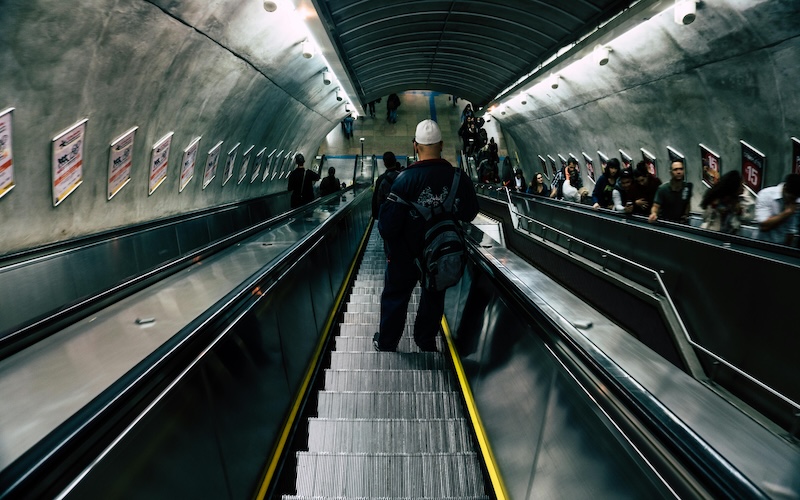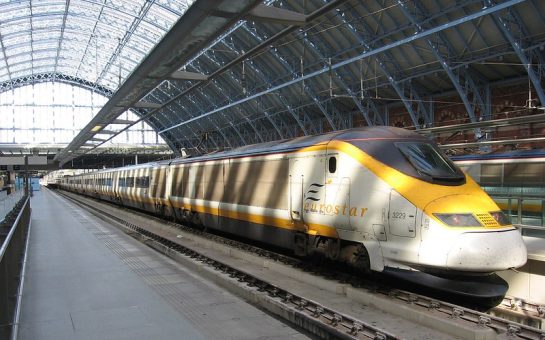The total number of falls down escalators on the London Underground is nearing pre-pandemic levels, according to TfL.
The total number of falls decreased by three-quarters between 2019-2020 and 2020-2021, but reached a total of 1847 in 2024-25, only 4% off its pre-pandemic standings.
This comes as TfL have upped their first aid training spending by 20% from £100k to £120k in the past two years, a Freedom of Information request found.
The station with the most escalator falls was King’s Cross with 586 recorded between 2019 and 2025, followed by Waterloo (577), London Bridge (555), and Euston (502).
These statistics can be further contextualised in relation to the number of people using the escalators annually, sourced through the number of tap-ins and tap-outs at station ticket barriers.
King’s Cross saw the highest number of tap-ins and tap-outs of any underground station over the course of one year, with almost 75million, so it’s unsurprising it saw the highest number of falls.
Adjusting for these figures, West Ham saw the highest proportion of escalator falls, as fallers made up for 0.0007% of the total people tapping in and out.
The total number of falls can also be interpreted within the context of the number of escalators in a station, ranging from Bank’s 35 to Greenford’s one.
Taking this into account, Euston comes out on top with 62.75 falls per escalator, followed by Shepherd’s Bush and St John’s Wood, both with 61.5.
Falls down an escalator can be both mentally and physically traumatising for commuters.
Ema Fish, 28, broke her wrist when she fell down a slippery escalator in Farringdon in June 2023, leading to her having to have a metal plate inserted.
She said: “When I fell down no one helped me initially and I think I kind of just went into shock and sat down on the escalator cradling my wrist, knowing instantly that it was broken.”
She alerted TfL staff who paid for her Uber to the hospital where she underwent surgery, and she ended up having to take eight weeks off work whilst she recovered from her injury.
She said: “When I was having an x-ray they said that I was very lucky to come away with just a wrist injury, that people who fall down escalators come in with brain injuries and things like that.”
Following her injury, she revealed that she is at a higher risk of developing arthritis as a result, and said she only ever remains stationary whilst travelling on escalators.
Rosie Peters, 25, fell down 10-15 steps of an escalator in Waterloo in October 2022 whilst travelling home from university.
She went on to drop out of her course two weeks later, citing her fall as being a final straw in the decision.
She said: “I was thinking ‘I’m going to have to be constantly rushing for this train again – what if I fall again?’
“It definitely wasn’t a main factor, but it did help sway me.”
She re-enrolled at another university which was closer to her home, but was forced to give up her scholarship at the original university.
The fall also caused her to graze her leg, which bled through her jeans.
Peters said an hour passed on her homebound train before she could get a seat, and, despite the bleeding being obvious, none of her fellow commuters asked if she was alright.
She said that she now makes a point of holding the handrail when travelling on escalators, but admitted that she finds it unpleasant, knowing how dirty handrails can be.
A spokesperson for TfL said that London Underground stations are cleaned daily, with handrails being treated with antibacterial cleaner, and that each station’s cleanliness is monitored up to 13 times a year.
They added that all TfL staff are given first aid training.
The spokesperson said: “Slips, trips and falls are the biggest cause of accidents on escalators and we are implementing measures to minimise these incidents and encourage safe use of escalators.
“These include trials of blue footprints on steps and handprints on handrails, contrasting colours on steps, under-step lighting, and increased safety messaging throughout our stations.”
Picture credit: Kaique Rocha





